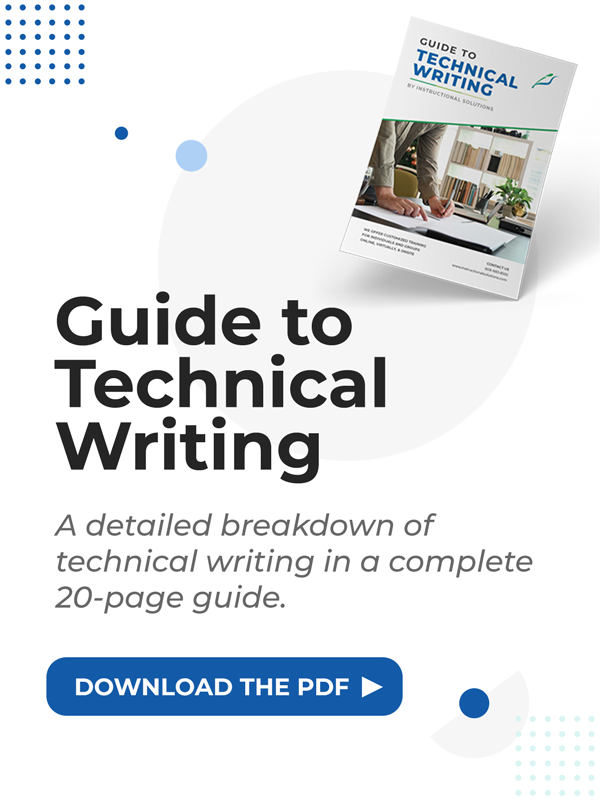Crafting Business Writing Goals for Performance Reviews

Originally published February 28, 2013, updated June 3, 2014

Table of Contents
Table of Contents
To accurately measure employee business writing, it is critical to link the business goals of the employee's key documents to specific writing attributes. "Better report writing" or "more clear email" is too vague and impossible to measure.
Instead, approach it more strategically:
- Define the goals of the documents your employees need to write.
- Assess the sub-skills required for these documents.
- Evaluate if these identified sub-skills actually support the overall document goals.

What is the desired outcome for the employee's documents? First, identify the key documents the employee needs to write and then assess the requisite skills for each of these major documents. For example, if an employee needs to write spec documents for vendors, the end goal of these spec documents is likely receiving vendor RFPs that accurately respond with solutions that match your company's specs and needs. Or, if employees need to write reports on the status of critical company equipement, the end goal of these status reports is likely keeping your executive team informed about key equipment or perhaps requesting funding for needed repairs.
So, the first task in crafting employee business writing goals is defining the real business purpose of each document. Don't move immediately to syntax and language, which is a very common mistake.
Every business document requires five core requisite skills:
- Audience awareness
- Appropriate content
- Content logically categorized
- Content logically sequenced
- Syntax and grammar that is clear and correct and interesting
Let's apply these requisite skills to the employee who needs to write spec documents:
- Sub-skill = audience awareness - Do the spec documents accurately address an identified reader (i.e. the employee understands when a vendor is unfamiliar, or familiar, or interested, or disinterested, or experienced, or less experienced). In essence, the employee is able to critically assess both the project and the vendor's current understanding.
- Sub-skill = appropriate content - Do the spec documents provide complete yet non-redundant information, based on vendor needs. For example, a vendor who has never worked with your company likely needs more background information than a vendor who has successfully completed a similar project before.
This is the most important skill in business writing. Be sure you thoroughly assess the substance of your employees' documents. This substance - the information, details, and general content - enables a reader to know or do the task at hand, so it's critical. Any gaps or errors here, and it can echo into very costly problems later.
- Sub-skill = logical organization - Are the spec documents logically organized? Is the information logically grouped, and tiered? Can the vendor readily identify significant information and delineate what is essential from background information?
- Sub-skill = logical sequencing - Do the spec documents start at the best place, move logically through the information, and close clearly and logically?
- Sub-skill = language and syntax and format - Is the grammar correct in the spec documents? Is the language clear? Is the tone professional and well matched to your company and vendor? Is the document easy to skim and absorb for busy readers?
This same process can be applied to customer service email, quarterly performance reports, business justification documents, or any key documents you or your employees write. The key is to identify the desired business outcome of key documents, and then break down the requisite skills into measurable components.
Goals must be linked to document outcome, with the skills broken down, or there is no real way to measure the progress or identify the skill gaps. Without the skill gaps clearly identified, any training or feedback will be hit or miss.
Most performance reviews for business writing focus primary on syntax - the language, grammar, and tone of the document. That is a mistake. It's essential to evaluate both substance and syntax. To do this, we have to first define purpose and then assess the requisite sub-skills.
There is another significant benefit of linking the document goals to specific rhetorical measurements. It's very likely that some employees, particularly non-native business writers, are weak in syntax and grammar, yet have fantastic analytical skills. This approach strengthens that desirable analytical thinking and places focus on the areas where real skill gains can happen.
WHERE WE CAN ASSIST
- We can analyze your employees' writing skills and write the performance goals for you. As you can see, this requires a thoughtful document purpose and writing analysis.
- All of our customized business writing training includes this assessment.
- Our executive business writing coaching program includes this, and coaches the employee until these identified skills are attained.


